31 Tempting Swedish Desserts Everyone Will Crave
Swedish desserts represent a delightful culinary tradition that blends sweet comfort with innovative flavors.
Nordic baking culture has long celebrated indulgent treats that warm the soul during cold winters.
Pastry chefs from stockholm to gothenburg craft remarkable confections with meticulous attention to texture and taste.
Rich ingredients like cardamom, berries, and smooth cream define these delectable creations that tantalize taste buds.
Regional techniques and family recipes contribute to a diverse dessert landscape that reflects cultural heritage.
Each sweet offering tells a story of generational cooking and local ingredients.
Passionate bakers continue to reinvent classic recipes while honoring traditional methods passed down through generations.
Here are 31 popular Swedish desserts that showcase the country's remarkable confectionery skills:
Popular Swedish Desserts for Sweet Memories
Swedish dessert tables overflow with charm and comfort, from delicate cardamom buns to creamy berry-topped cakes. Every bite brings the warmth of tradition and celebration.
Kladdkaka
Kladdkaka are decadent Swedish chocolate cakes with a signature gooey center and crispy exterior that capture chocolate lovers' hearts.
Swedish families have perfected this dessert through generations, creating a dense cake made from simple ingredients like eggs, cocoa, butter, sugar, and flour.
Bakers carefully balance the cake's texture, ensuring a moist interior remains soft while developing a thin, crunchy outer layer.
Rich chocolate flavors dominate each bite, with intense bitterness complemented by a light dusting of powdered sugar.
Traditionally served during fika, Sweden's beloved coffee break, kladdkaka brings friends and family together around a shared sweet experience.
Most bakeries and home kitchens feature this beloved dessert as a standard treat.
Whipped cream or vanilla ice cream often accompanies the cake, enhancing its deep chocolate profile.
Kladdkaka represents Swedish baking's simplicity and commitment to pure, satisfying flavors.
Cream And Strawberry Cake (Jordgubbstarta)
Jordgubbstarta is a lavish Swedish layer cake celebrating fresh strawberries through intricate assembly of multiple delicate components.
Summer strawberries form the cake's vibrant centerpiece, nestled between tender sponge cake layers soaked in bright lemon syrup.
Rich pastry cream provides a smooth foundation for the fruit, while mascarpone whipped cream adds luxurious softness to each slice.
Precise layering involves three repetitions of sponge cake, syrup, pastry cream, and strawberry quarters.
Kitchen skills shine through careful construction of each precise layer.
Sweet vanilla undertones complement the tangy lemon and creamy mascarpone.
Seasonal strawberries elevate this dessert from simple cake to elegant Swedish tradition.
Generous portions invite sharing with friends and family during warm summer gatherings.
Oven Cheese (Kalvdans)
Uunijuusto are traditional Finnish baked milk custards crafted from cow's milk and colostrum, creating a unique dairy delicacy with a rich, creamy texture.
Native to Nordic regions, this distinctive dish transforms raw milk into a thick, golden dessert through careful oven baking.
Finnish families prepare uunijuusto by combining special yellow milk produced immediately after a cow gives birth with regular milk.
Slow baking allows natural milk proteins to coagulate and thicken into a smooth, custard-like consistency.
Cinnamon and fresh berries frequently accompany this sweet treat, enhancing its natural dairy flavors.
Rural Finnish communities have maintained this generations-old recipe as a cherished culinary tradition.
Seasonal berries like cloudberries or lingonberries offer perfect complementary notes to the creamy base.
Summer gatherings often feature uunijuusto as a beloved dessert that connects generations through its simple, authentic preparation.
Vafflor
Vafflor are delicate Swedish heart-shaped waffles originating in the early 1600s, celebrated as a national favorite with deep cultural significance.
Swedish families traditionally enjoy these thin, pancake-like treats without yeast, distinguishing them from Belgian waffles.
Two primary varieties exist: egg waffles and crispy waffles, with egg waffles offering more substance and richness.
Swedes consume vafflor throughout the year, but March 25th marks Waffle Day, their most festive celebration.
Locals serve these waffles with an array of sweet accompaniments like fruit jams, whipped cream, and ice cream.
Home kitchens and cafes across Sweden prepare these classic treats using simple ingredients and cherished techniques.
Generations have passed down recipes, making vafflor a beloved staple of Swedish culinary tradition.
Tourists and locals alike savor these versatile waffles as a delightful comfort food with deep cultural roots.
Semla
Semla are decadent Swedish cream buns originating from a centuries-old culinary tradition of indulgence before Lent.
Cardamom-spiced wheat bread buns are delicately sliced and filled with rich almond paste and voluminous vanilla whipped cream.
Traditional preparation involves carefully layering almond paste inside the soft bun, then generously topping it with whipped cream.
Powdered sugar elegantly dusts the cream-topped creation, adding a final touch of sweetness.
Swedish bakeries and home kitchens celebrate this festive treat especially on Fat Tuesday.
Winter celebrations frequently feature these luxurious pastries as a centerpiece dessert.
Generations have enjoyed semla as a cherished seasonal delicacy.
Each bite promises a perfect balance of spiced bread, creamy filling, and powdered sugar.
Smulpaj
Smulpaj is a beloved Swedish dessert featuring a crumbly, buttery topping spread over juicy seasonal fruits that creates a perfect balance of textures and flavors.
Swedish bakers craft this rustic pie by combining flour, butter, and sugar into a crisp crumb mixture that gets sprinkled over fresh berries like blueberries or raspberries.
Generous amounts of cinnamon enhance the sweet base, which bakes into a golden-brown crust with a soft, fruity interior.
Home cooks often serve the warm pie with a dollop of whipped cream, vanilla custard, or a scoop of cold ice cream.
Traditional preparation involves using simple ingredients found in most kitchens, making smulpaj an accessible and comforting dessert.
Regional variations might include different fruits depending on seasonal availability.
Families across Sweden enjoy this simple yet satisfying treat during summer gatherings and winter celebrations.
Skansk Appelkaka
Appelkaka is a beloved Swedish dessert from Skane that transforms simple ingredients into a rustic, comforting apple cake with deep regional roots.
Mashed or sliced apples create the cake's soft foundation, layered generously with sweetened breadcrumbs or crumbled rye bread.
Butter and cinnamon infuse the dessert with warm, rich flavors that melt during baking.
Sliced butter tops the cake, creating a golden, crispy surface when baked.
Rye bread or traditional breadcrumbs add a distinctive texture and depth to the dessert.
Sugar balances the apples' natural tartness, creating a harmonious blend of flavors.
Vanilla sauce or whipped cream often accompanies the cake, enhancing its creamy profile.
Traditional baking methods ensure each slice carries the authentic taste of southern Swedish cuisine.
Knack
Knäck are traditional Swedish Christmas toffees crafted from caramelized sugar and butter that shatter into crisp, golden fragments when bitten.
Swedish families create these sweet treats during holiday celebrations, carefully heating sugar and cream to create a smooth, rich base.
Chopped nuts like almonds frequently enhance the toffee's texture and flavor, adding crunch and depth to each piece.
Makers pour the molten mixture into small paper molds, allowing it to cool and harden into delicate, fragile candies.
Families often prepare knäck together, transforming simple ingredients into a cherished seasonal confection.
Generations have passed down techniques for achieving the perfect golden-brown color and glass-like consistency.
Regional variations include different nut selections and subtle sweetener modifications.
Winter festivities in Sweden remain incomplete without these traditional, melt-in-your-mouth toffee pieces.
Prinsesstarta
Princess cake is a beloved Swedish dessert featuring layers of sponge cake, vanilla buttercream, and whipped cream under a signature green marzipan dome.
First published in 1948, this cake quickly became a national favorite during the 1950s.
Swedish celebrations always include this elegant pastry as a centerpiece dessert.
Modern versions add a layer of raspberry jelly for extra flavor complexity.
Its original name, green cake, referred to its distinctive marzipan color.
Pastry shops across Sweden stock this iconic sweet treat.
Traditional recipes include multiple soft cake layers alternating with creamy fillings.
Green marzipan crowns the cake, creating its memorable rounded shape.
Blabarssoppa
Blåbärssoppa are traditional Swedish fruit soups crafted from deep-purple bilberries or blueberries, embodying Swedish culinary heritage during winter sports events like Vasaloppet.
Marathon skiers often consume this warm, sweet liquid as a natural energy boost and hydration source during intense cross-country competitions.
Athletes and locals prize this nutrient-rich soup for its quick-energy properties and comforting warmth in cold Nordic climates.
Cornstarch, sugar, and water create its smooth consistency, which can be enjoyed hot or cold depending on seasonal preferences.
Medical traditions suggest the soup offers health benefits due to its antioxidant-rich berries.
Scandinavian families frequently serve blåbärssoppa as a light dessert or refreshing beverage.
Whipped cream serves as a classic topping, adding richness to the soup's natural berry flavors.
Swedish ski culture has particularly embraced this versatile berry soup as a traditional performance and recovery drink.
Anglamat
Tilslrte bondepiker stands as a classic Scandinavian dessert combining rustic simplicity with elegant layering from Nordic kitchens.
Norwegian home cooks layer mashed fruits like apples or plums at the bottom of serving glasses with airy whipped cream and toasted cinnamon-spiced breadcrumbs.
Each glass reveals alternating soft and crunchy textures that create a delightful sensory experience.
Sweet fruit provides a tart foundation for rich cream and crisp breadcrumb layers.
Traditional preparations often include seasonal fruits and careful ingredient selection.
Almonds or chocolate occasionally crown this dessert for extra visual appeal.
Regional variations emerge across Scandinavian countries based on available ingredients.
Generations have enjoyed this unpretentious yet sophisticated sweet treat that celebrates Nordic culinary traditions.
Hallongrotta
Hallongrotta are traditional Swedish jam-filled butter cookies featuring a distinctive thumb-pressed center filled with bright red raspberry preserves.
Swedish families have cherished these delicate cookies since the 1800s during classic kafferep coffee gatherings.
Bakers carefully craft each cookie by mixing butter, flour, sugar, and vanilla into a smooth dough.
Gentle thumb indentations create perfect wells for spooning sweet raspberry jam in the center of each cookie.
Simple ingredients transform into elegant treats that melt in your mouth with a perfect balance of buttery richness and fruity brightness.
Each cookie represents a generations-old baking tradition passed down through Swedish households.
Raspberry jam provides a vibrant burst of flavor against the tender, golden cookie base.
Small yet meaningful, hallongrotta connect people through shared moments of simple pleasure.
Swedish Oatmeal Balls (Chokladbollar)
Chokladbollar are beloved Swedish no-bake chocolate treats packed with rich flavor and simplicity.
Home cooks traditionally roll the soft mixture into small spheres and coat them with shredded coconut, pearl sugar, or chocolate sprinkles.
Children often help prepare these quick snacks, making them a fun family activity.
Swedish cafes and bakeries serve chokladbollar as popular afternoon snack options alongside coffee.
Coffee shops frequently display these treats on classic pastry trays near espresso machines.
Each bite delivers a sweet chocolate-oat combination with a soft, crumbly texture.
Cool temperatures help the balls maintain their shape and enhance their rich flavor profile.
Napoleonbakelse
Napoleonbakelse stands as Sweden's exquisite interpretation of the classic French mille-feuille, featuring delicate layers of crisp, buttery pastry alternating with smooth vanilla custard and billowy whipped cream.
Swedish bakers craft the pastry with precision, using a meticulous combination of flour, butter, water, egg yolks, salt, and a touch of lemon juice or vinegar.
Rectangular pastry sheets are carefully baked until golden and flaky, then meticulously stacked with creamy fillings.
Each layer promises a perfect balance of textures, from crisp pastry to silky custard.
Powdered sugar often dusts the top, adding a final decorative touch.
Regional variations might include additional garnishes or slight modifications to the traditional recipe.
Napoleon bakelse represents a delightful fusion of French pastry techniques with Swedish culinary traditions.
Ostkaka
Ostkaka are traditional Swedish cheesecake-like desserts crafted from unique rennet-curdled milk, distinguishing them from classic American versions.
Swedish families create this light, custardy delicacy by transforming milk into soft cheese using traditional methods.
Bakers blend the fresh cheese with flour, eggs, sugar, and almonds before gently baking until golden brown.
Unlike dense American cheesecakes, ostkaka presents a lighter, less sweet profile that feels more delicate on the palate.
Typically served lukewarm, ostkaka shines when topped with fresh berry syrup or accompanied by whipped cream and ripe strawberries.
Regional variations exist across Sweden, with some families adding unique spices or ingredients.
Modern interpretations often substitute cottage cheese to simplify the traditional preparation process.
Klappgrot
Vispipuuro are traditional Baltic berry-infused semolina desserts bursting with creamy, airy textures and bright fruit flavors.
Nordic families have enjoyed this whipped porridge for generations as a comforting sweet treat.
Semolina slowly simmers with water until thickening into a smooth base.
Tart lingonberries, cranberries, or red currants provide intense fruity undertones during cooking.
Continuous whisking creates an extraordinary cloud-like consistency that separates this dessert from standard porridges.
Kitchen traditions across Estonia, Finland, and Latvia preserve this simple yet elegant recipe.
Cold temperatures enhance the dessert's fluffy texture and tangy fruit notes.
Generations have savored this lightweight, refreshing Baltic specialty as a beloved winter comfort food.
Nyponsoppa
Nyponsoppa is a traditional Swedish dessert soup featuring rose hips as its primary ingredient, transforming these tart berries into a smooth, comforting sweet treat.
Swedish families have long cherished this simple yet flavorful dish that blends pureed rose hip fruits with sugar and occasional warming spices like cinnamon or cloves.
Home cooks typically prepare nyponsoppa by simmering and straining rose hips to create a rich, ruby-red liquid with a balanced sweetness.
Serving options include enjoying the soup warm or chilled, often accompanied by a dollop of whipped cream or almond macaroons for added texture.
Rose hips, packed with vitamin C, contribute significant nutritional value to this beloved Nordic dessert.
Regional variations might include different spice combinations or serving styles depending on family traditions.
Swedish households commonly serve nyponsoppa as a light dessert or refreshing starter during autumn and winter months.
Punschrulle
Punschrulle are iconic Swedish log-shaped cookies crafted from crumbled cake or cookie crumbs, cocoa, and punsch liqueur, wrapped in bright green marzipan and dipped in chocolate at both ends.
Swedish bakeries nicknamed these treats "dammsugare" or vacuum cleaners because bakers ingeniously used leftover pastry crumbs to create their rich interior.
Arrack, neutral alcohol, sugar, and wine combine in punsch liqueur, providing the distinctive flavor profile of these unique cookies.
Bakery workers traditionally rolled these treats by hand, transforming random cake scraps into an inventive sweet snack.
Green marzipan covers the cylindrical cookie, giving it a striking visual appearance.
Chocolate-dipped ends add extra richness and texture to the treat.
Each punschrulle reflects resourceful Swedish baking traditions.
Fruktsoppa
Fruktsoppa is a traditional Swedish sweet fruit soup celebrated during holidays, offering a versatile culinary experience across Scandinavian tables.
Swedish families prepare this unique dish by simmering a rich blend of dried fruits like prunes, apricots, and raisins with tart apple slices, water, cinnamon, and sugar.
Golden raisins, peaches, and pears typically form the base of this light soup, creating a delicate flavor profile.
Tapioca provides a subtle thickening texture to the mixture.
Home cooks can serve fruktsoppa chilled, warm, or at room temperature, depending on seasonal preferences.
Rum or wine can enhance the soup's complexity with a subtle drizzle.
Nutmeg or cloves add a final aromatic touch to this adaptable dish.
Beyond dessert, Scandinavians enjoy fruktsoppa as an appetizer, fruit salad, or surprisingly, even a main course.
Budapestbakelse
Budapestbakelse represents a Swedish meringue-based pastry featuring toasted hazelnuts, whipped cream, and mandarin oranges rolled into an elegant dessert.
Swedish pastry chef Ingvar Strid originally created this decadent treat that combines crisp meringue with smooth chocolate and creamy fillings.
Dark chocolate drizzles elegantly coat the exterior, while powdered sugar and cocoa powder provide additional visual appeal.
Toasted hazelnuts add rich nutty complexity to each bite.
Whipped cream creates a soft interior texture that complements the crunchy meringue shell.
Mandarin orange slices introduce bright citrus notes throughout the dessert.
Finnish bakers sometimes modify the recipe by substituting bananas and raspberries for traditional oranges.
Despite its name, this pastry originates entirely in Sweden, not Budapest.
Klenat
Klenatis are crispy, golden Nordic deep-fried pastries beloved across Scandinavian regions for their unique rhomb-shaped design and rich culinary heritage.
Crafted from buttery yeasted dough often enhanced with liqueurs, these delicate treats undergo careful rolling and shaping into distinctive knotted trapezoid forms.
Skilled bakers carefully stretch and twist the dough to create intricate geometric patterns before submerging them in hot oil.
Traditional recipes pass through generations, reflecting deep cultural connections to festive celebrations and family gatherings.
Each klenatis emerges with a perfectly crisp exterior and light, airy interior that crackles when bitten.
Nordic bakeries and home kitchens continue preparing these sweet pastries during special occasions and holiday seasons.
Regional variations might include subtle differences in spices or additional ingredients like cardamom or vanilla.
Skansk Spettkaka
Skansk spettkaka or pyramid cake stands as a remarkable Swedish dessert featuring a distinctive cone-shaped design crafted through meticulous egg, sugar, and potato flour layering.
Swedish bakers have perfected this intricate cake since the 1600s, with its first documented recipe appearing in Susanna Egerin's 1733 cookbook.
Wealthy families originally savored this delicacy, which requires exceptional skill to prepare using a specialized rotating mould.
Bakers slowly build the cake by carefully applying thin layers of batter, gradually creating its signature golden-brown exterior with irregular spikes.
Temperature control plays a crucial role in achieving the cake's unique texture and appearance.
Traditional preparation involves rotating the mould continuously while adding batter to create height and structure.
Each layer must be applied precisely to maintain the cake's architectural form.
Sweet and light, this cake represents a remarkable example of Swedish culinary craftsmanship.
Drommar
Drommar cookies are Swedish dream-like pastries featuring an exceptionally light and crumbly texture that melts instantly in your mouth.
Swedish bakers craft these delicate treats using simple ingredients like butter, sugar, flour, and unique baking ammonia.
Traditional recipes date back generations in Scandinavian kitchens.
Ammonium bicarbonate creates the cookie's signature airy consistency and distinctive crisp edges.
Home bakers carefully mix ingredients to achieve a delicate, powdery finish.
Generations have enjoyed these cookies during afternoon coffee breaks or family gatherings.
Sweet and subtle, drommar represent a classic Nordic baking tradition.
Small in size but rich in cultural significance, these cookies continue to delight sweet lovers across Sweden.
Sju Sorters Kakor
Sju sorters kakor are a cherished Swedish tradition celebrating hospitality through an elaborate cookie spread served during fika, a beloved social coffee break.
Swedish families traditionally prepared seven distinct cookie varieties to welcome guests, signaling warmth and meticulous preparation.
Offering fewer than seven types was once considered discourteous and suggested poor hosting skills.
Modern interpretations have relaxed the strict seven-cookie rule while maintaining the cultural significance of abundant, carefully prepared treats.
Guests would enjoy these cookies alongside strong coffee, creating a communal experience that strengthened social bonds.
This sweet tradition reflected Swedish cultural values of generosity and community connection.
Historical roots of sju sorters kakor trace back to early 20th-century social customs, emphasizing hospitality and culinary craftsmanship.
Aggost
Aggost, a cherished egg cheese from Bohuslan, Sweden, transforms simple ingredients into a creamy delicacy with deep cultural roots.
Locals craft this traditional dish by heating milk, sour milk, eggs, and sugar until it curdles naturally.
Wooden molds with intricate carvings shape the cheese, creating small holes that help drain excess liquid.
Families prepare aggost during special celebrations like Christmas, Easter, and Midsummer, highlighting its significance in regional cuisine.
Originally served with cured herring, modern versions now feature sweet accompaniments like fresh berries, jams, and whipped cream.
Sugar or cinnamon often dust the top, adding extra flavor to this unique cheese.
Swedish households pass down the recipe through generations, preserving a taste of their culinary heritage.
Each bite connects people to Bohuslan's rich gastronomic traditions.
Fatost
Fatost is a classic Swedish dessert from Norrland featuring a rich, sweet pudding baked with simple ingredients like syrup, milk, sugar, rennet, eggs, and flour.
Swedish families traditionally prepare this warm winter treat during Christmas celebrations, combining local dairy and baking techniques.
Cardamom and cinnamon provide additional depth and warmth to the dish's flavor profile.
Home cooks carefully blend ingredients before baking the mixture into a smooth, custardy texture.
Rural communities have passed down this recipe through generations, preserving its cultural significance.
Scandinavian kitchens often serve fatost as a comforting dessert during cold winter months.
Bakeries and home kitchens across northern Sweden continue to make this sweet specialty.
Diners enjoy fatost best when served hot and freshly prepared.
Gotlandsk Saffranspannkaka
Gotlandsk saffranspannkaka stands out as a classic Swedish dessert bursting with golden saffron hues and rich almond flavors from Sweden's Gotland island.
Rice pudding forms the base of this sweet treat, blended carefully with saffron, sugar, and beaten eggs for a luxurious texture.
Almonds provide a subtle crunch and nutty undertone throughout the creamy mixture.
Bakers carefully pour the golden batter into baking dishes and cook until a beautiful golden-brown surface emerges.
Traditional serving methods include cutting generous slices and pairing them with sweet dewberry jam and freshly whipped cream.
Regional bakers have perfected this recipe over generations, transforming simple ingredients into a memorable dessert.
Scandinavian households often prepare saffranspannkaka during special gatherings and holiday celebrations.
Saffron's distinct flavor and vibrant color make this dessert a unique culinary experience from Sweden's island cuisine.
Bondkakor
Bondkakor are traditional Swedish cookies with a rustic charm, featuring a caramel-like sweetness and delightful almond crunch.
Swedish farmers originally created these round, flat treats using simple ingredients like flour, sugar, butter, and golden syrup.
Chopped or sliced almonds provide a satisfying textural contrast to the cookie's soft, chewy base.
Each cookie often displays a single almond decoratively placed on top, adding visual appeal.
Golden syrup gives these cookies a rich, warm undertone that distinguishes them from other butter cookies.
Home bakers across Sweden have passed down this recipe through generations, celebrating its straightforward yet delicious preparation.
Traditional baking methods ensure each bondkakor maintains its classic texture and flavor profile.
Small bakeries and home kitchens continue to prepare these cookies as a beloved sweet snack.
Brussels Cookies (Brysselkex)
Brysselkex are classic Swedish butter cookies characterized by their rich, crumbly texture and subtle sweetness.
Swedish bakers craft these small circular treats using minimal ingredients like butter, sugar, and flour.
Originating in Belgium despite their Swedish name, these cookies quickly became popular across Scandinavia.
Bakeries and home kitchens traditionally prepare brysselkex with precise techniques to achieve their signature melt-in-your-mouth quality.
Butter plays a crucial role in creating their distinctive smooth consistency and golden color.
Home bakers often enjoy making these cookies during holiday seasons and special gatherings.
Their simple recipe allows for easy preparation and consistent results.
Brysselkex pairs wonderfully with coffee or tea, making them a perfect afternoon snack.
Swedish Checkerboard Cookies (Schackrutor)
Schackrutor are iconic Swedish checkered cookies combining contrasting chocolate and vanilla doughs in a precise geometric pattern that mirrors a chessboard's distinctive grid.
Swedish bakers meticulously layer alternating colored dough squares, creating a visually striking cookie with crisp edges and elegant symmetry.
Butter and flour form the classic shortbread base, ensuring a rich, crumbly texture that melts smoothly in your mouth.
Traditional recipes require carefully rolling and stacking chocolate and vanilla doughs into perfect squares before slicing them into uniform segments.
Each cookie displays a precise checkerboard design that highlights the baker's skill and attention to detail.
European pastry traditions inspire this classic treat, which balances sweet flavors with a sophisticated visual presentation.
Simple ingredients like butter, sugar, flour, and cocoa powder transform into an elegant dessert.
Germans and Scandinavians frequently serve these cookies during holiday gatherings and afternoon coffee breaks.
Mandelmusslor
Mandelmusslor are delicate Swedish almond cookies shaped like elegant seashells, offering a rich buttery flavor and crumbly texture that melts in you.
Swedish bakers carefully blend ground almonds, wheat flour, sugar, butter, and eggs into a smooth dough that transforms easily in fluted metal tarts.
Traditional recipes pass through generations, creating a beloved sweet treat deeply rooted in Scandinavian baking culture.
Home kitchens and bakeries across Sweden prepare these cookies for special occasions and holiday celebrations.
Their distinctive scalloped shape comes from pressing dough into intricate metal molds with beautiful ridged edges.
Almonds provide a nutty undertone that complements the cookie's delicate sweetness.
Each cookie requires precise technique to achieve perfect golden-brown edges.
European pastry traditions inspire these elegant, bite-sized treats that pair wonderfully with coffee or tea.
What Types of Berries Are Most Common in Swedish Desserts?
Swedish desserts often feature an abundance of fresh and wild berries, celebrated for their vibrant flavors and seasonal availability. The most common berries include:
These berries bring natural sweetness, acidity, and color that brighten Swedish desserts, connecting them to the country’s rich foraging traditions and seasonal rhythms.

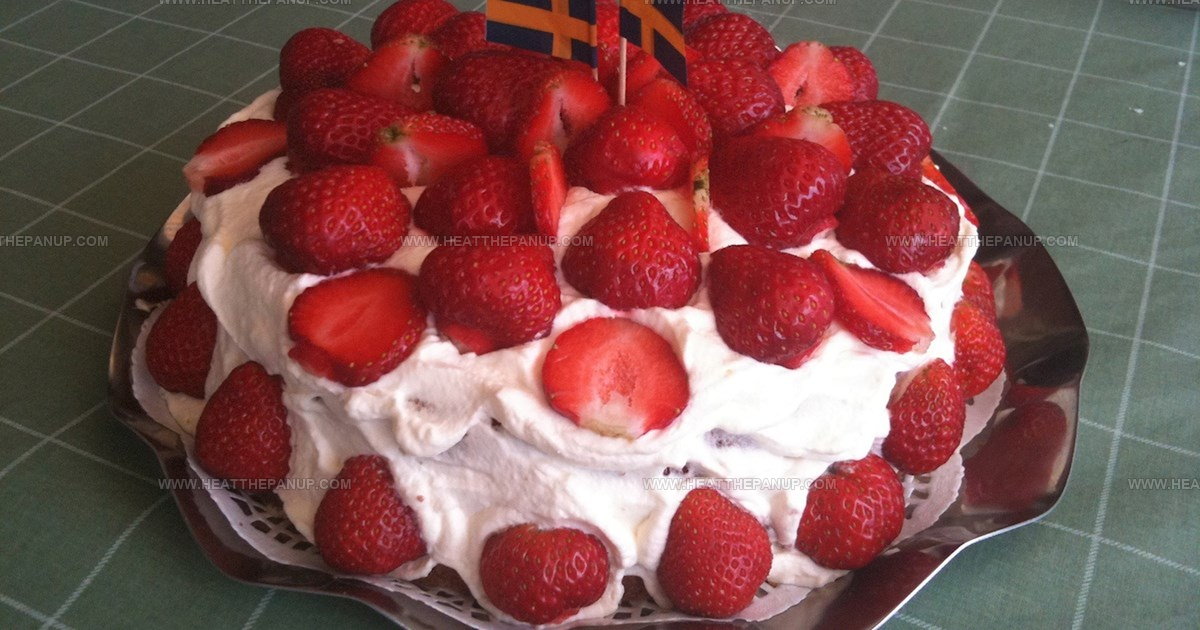
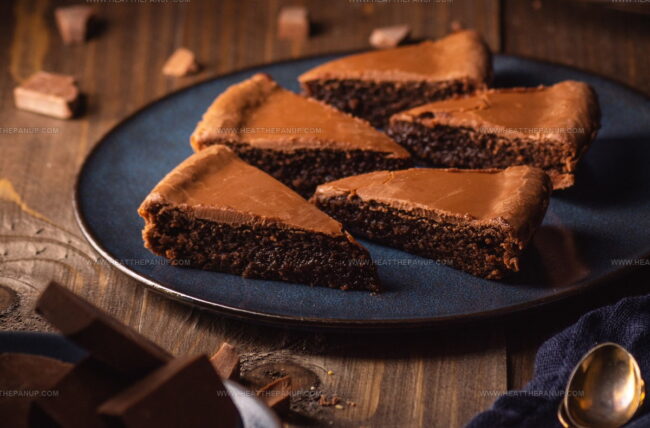
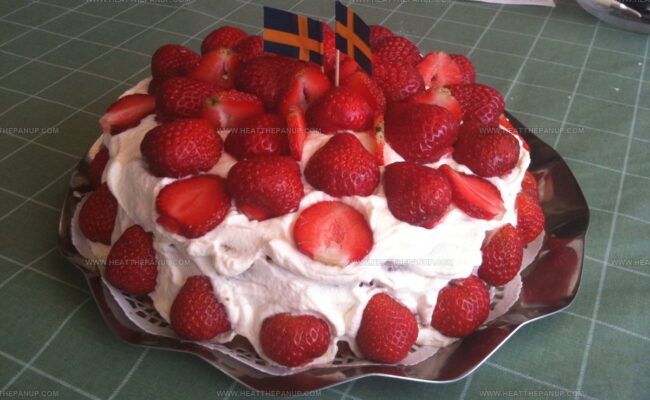
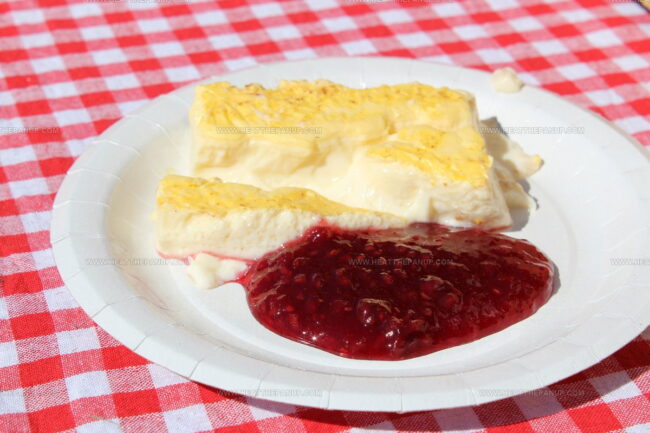
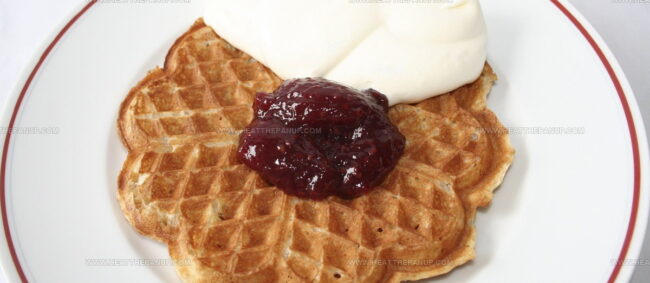
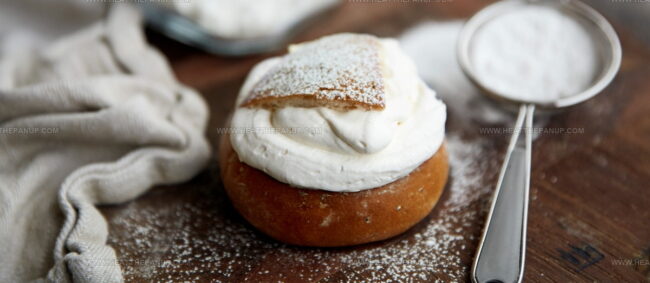
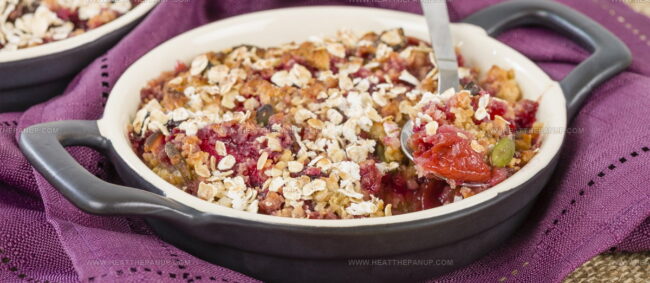
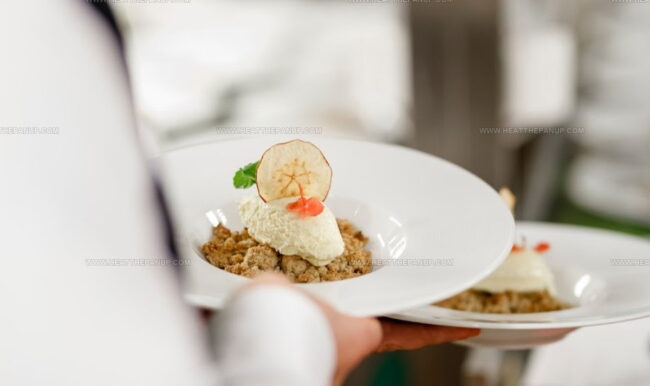
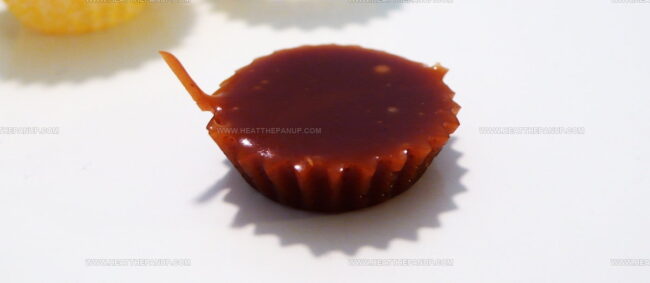
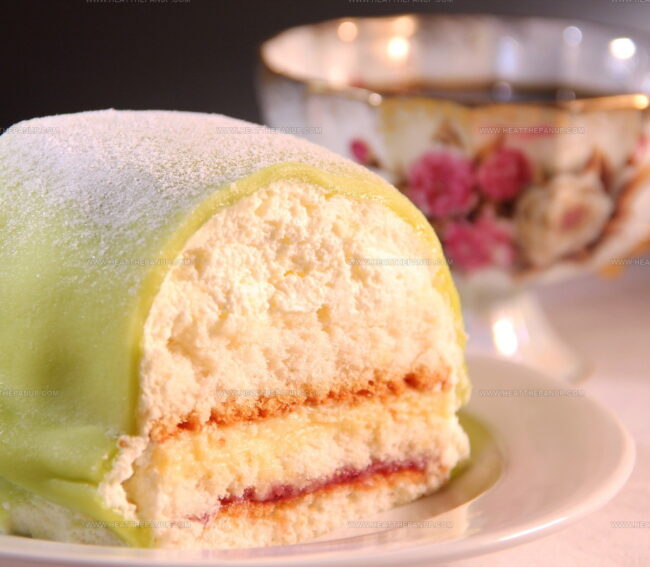
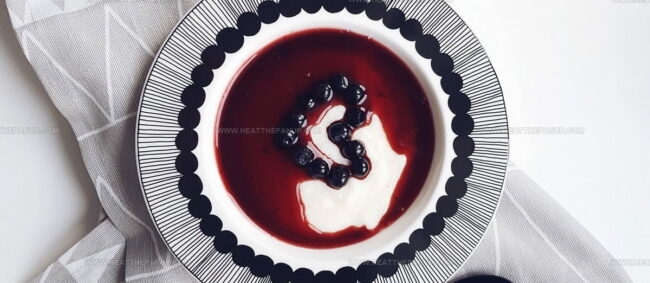
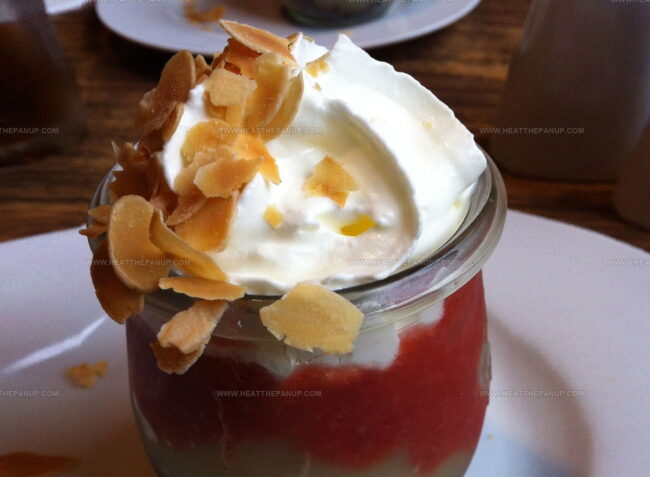
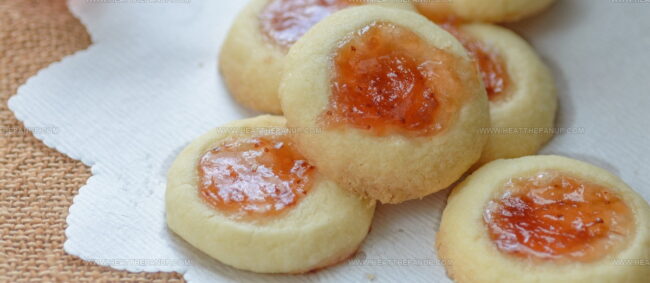
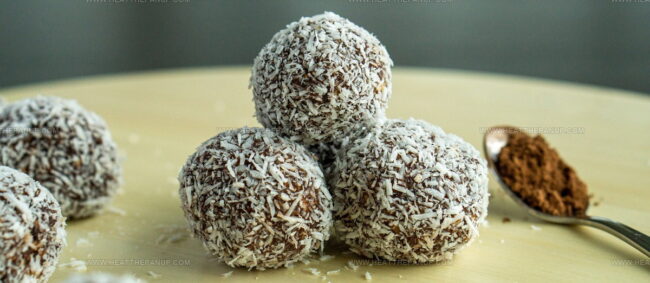
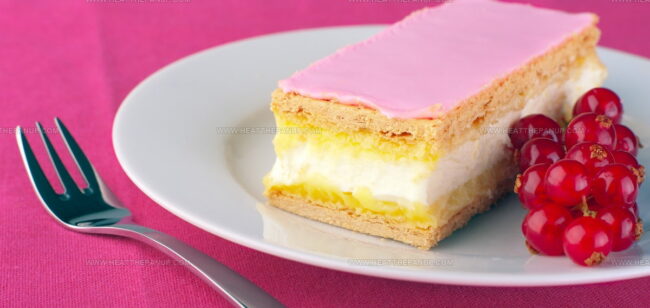
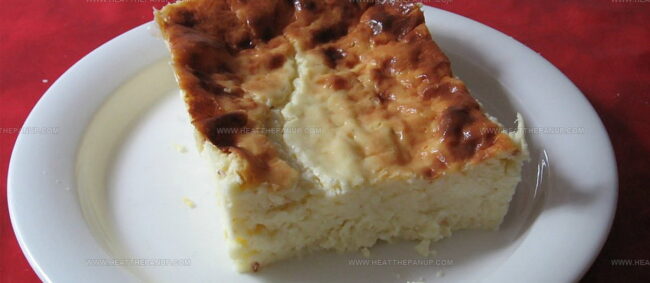
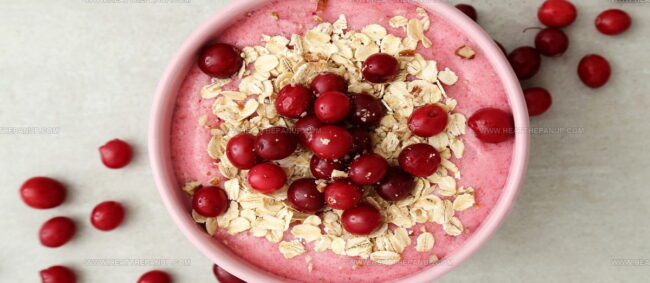
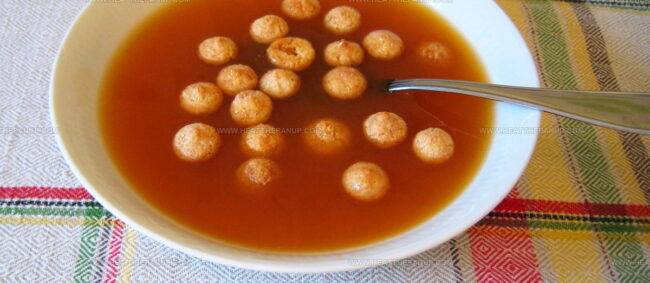
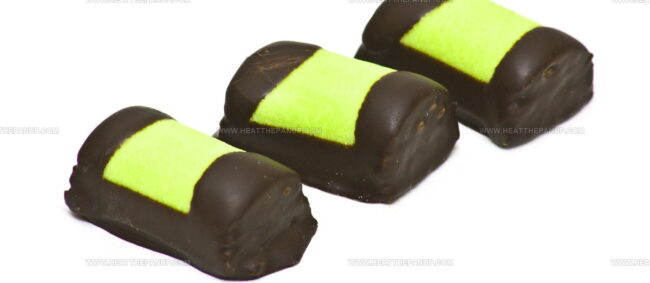
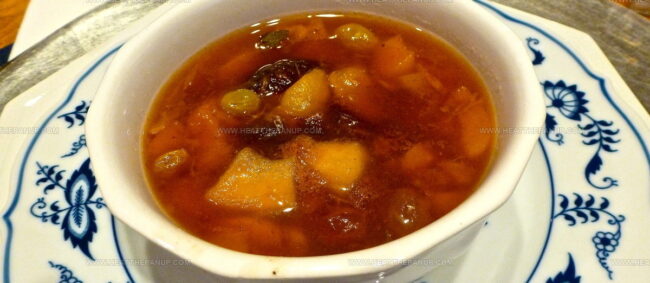
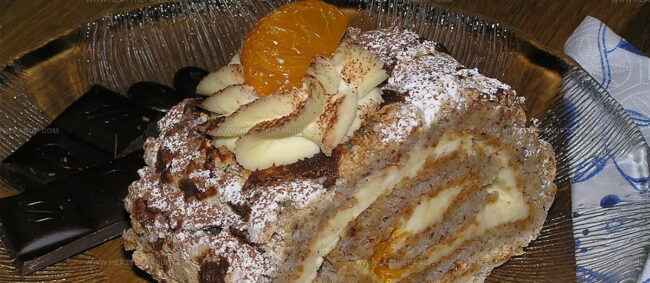
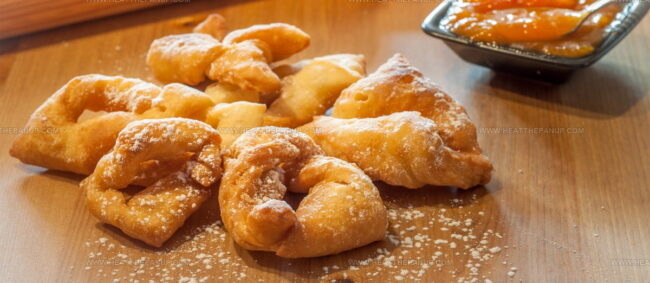
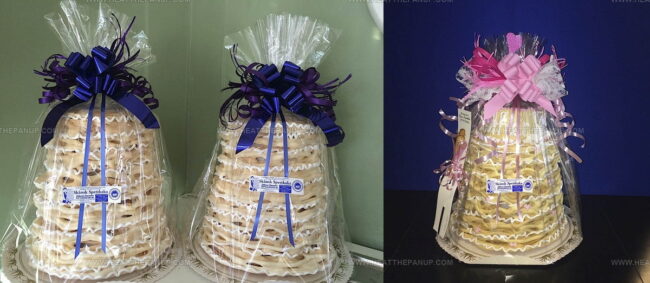
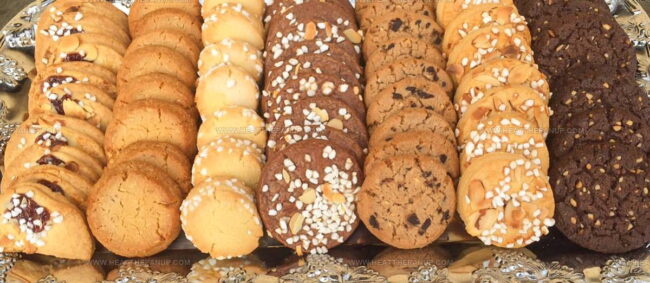
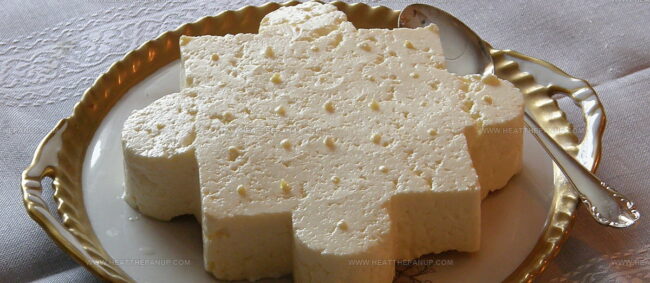
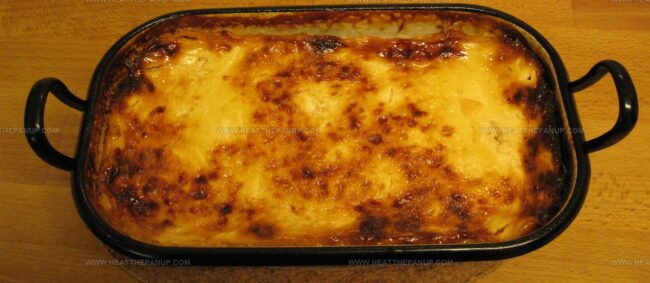
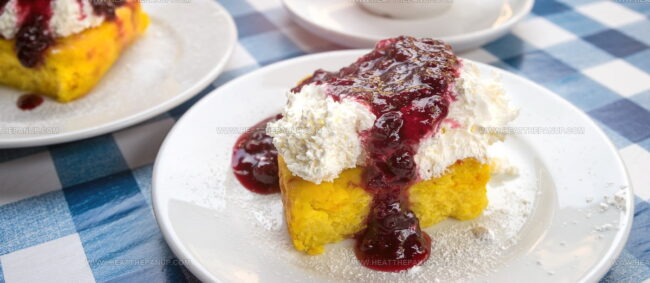
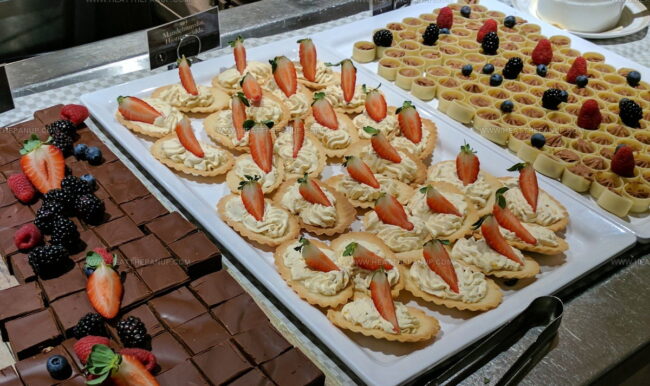
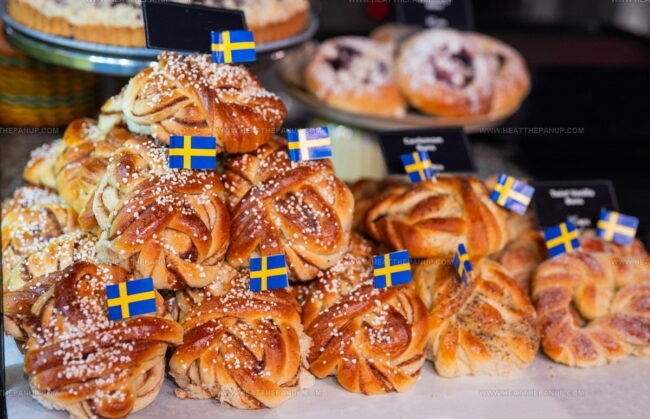
Angelina Wiles
Content Editor & Culinary Enthusiast
Expertise
Food Writing and Editing, Vegetarian and Vegan Cuisine, Baking and Pastry Arts, Sustainable Cooking Practices
Education
Portland Community College
Certificate in Culinary Arts
Focus: Emphasis on sustainable cooking practices, vegetarian cuisine, and food writing.
Oregon Culinary Institute
Diploma in Baking and Pastry Arts
Focus: Specialized training in artisanal baking, pastry techniques, and dessert presentation.
Angelina’s love for cooking started with handwritten family recipes and weekend trips to farmers’ markets around Portland. She followed her passion with a Certificate in Culinary Arts from Portland Community College, then perfected her sweet side with a Diploma in Baking and Pastry Arts at Oregon Culinary Institute.
Angelina believes recipes should feel like a conversation, not a science project. She’s all about helping readers trust themselves in the kitchen with simple steps, fresh ideas, and easy twists on classic meals.
When she’s not editing recipes, she’s baking bread, sipping coffee, or getting inspired by the changing seasons.